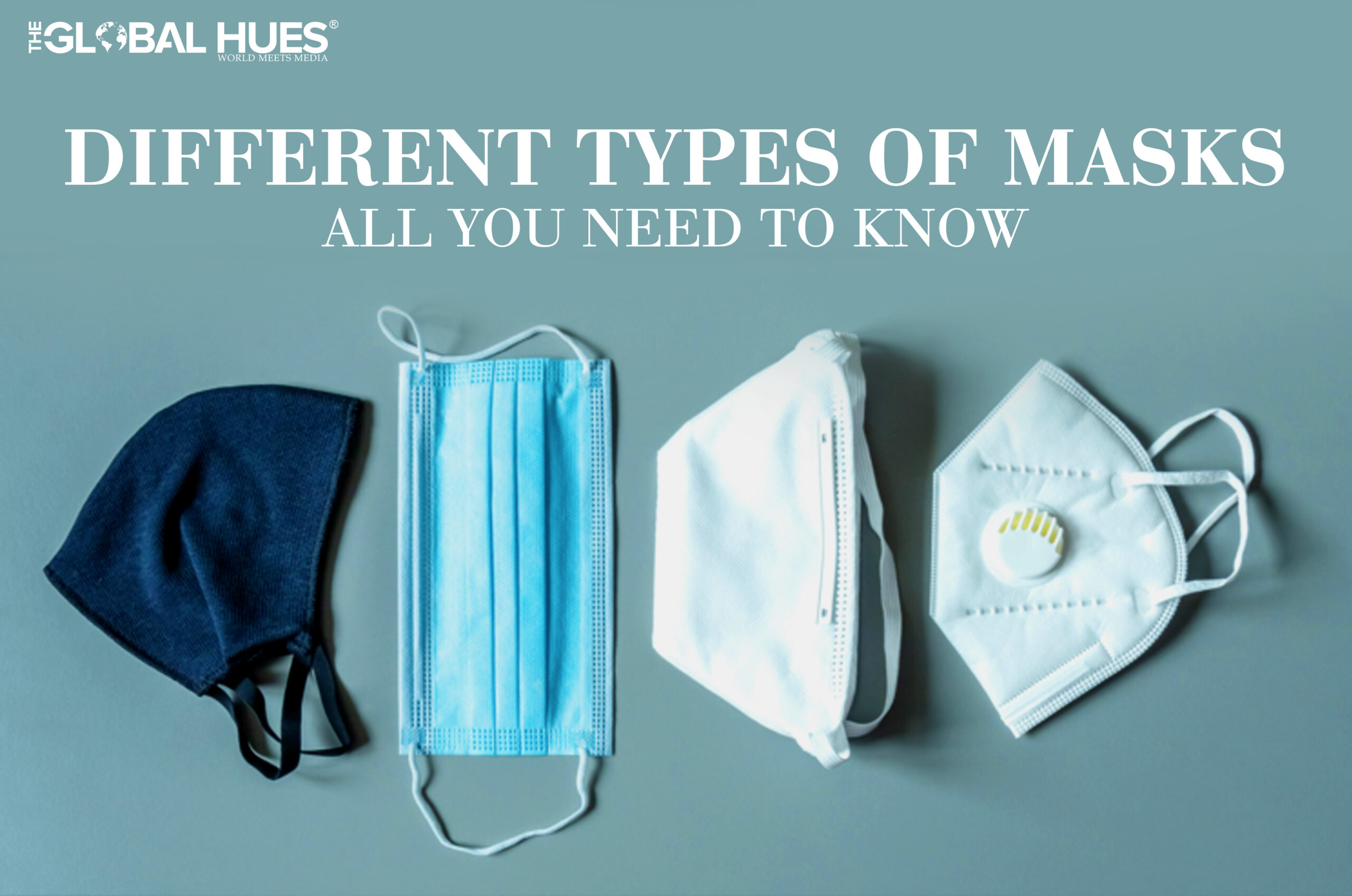With the ongoing Coronavirus pandemic, it is essential for people to take precautionary measures and protect themselves. Wearing masks whenever stepping out has become a necessity now and hence, we need to be aware of the different types of masks available and how they function.
-
Cloth Mask
A cloth face mask fits against the face using either ear loops or ties around the head. Multiple layers of fabric create a barrier between your nose and mouth and the air outside, helping contain any respiratory droplets that you may breathe out. The thicker the mask, the greater the barrier.
You can easily make your own cloth mask at home with or without a sewing machine using a wide variety of fabrics, though tightly woven fabrics like cotton are recommended. These kinds of fabrics can also be useful when wearing a mask in heat or while exercising in a mask.
-
Surgical Mask
Surgical masks are disposable covers that are usually worn by medical professionals as Personal Protective Equipment (PPE) during surgeries or other procedures. They are often made of a combination of paper and plastics and are commonly light blue in color.
Surgical masks are designed to protect against large respiratory droplets but they don’t protect against smaller droplets. They are effective in helping protect others around you if you are a carrier of the virus. While these masks are ideal for one-time usage, they also present a few challenges – they can’t be washed and reused like cloth masks.
-
N95 or Professional-Grade Medical Mask
N95 respirators and other professional-grade medical masks are carefully sized to form a tight seal between the air outside and the face. They are designed to protect healthcare workers from droplets in the air.
These masks are highly effective when professionally fitted. Healthcare workers who wear N95 masks undergo a detailed test of the mask’s fit to ensure that it creates a full seal – a service currently unavailable to the general public.
Some reports have found that online sellers of “professional-grade masks” are actually selling ineffective counterfeits. N95s are currently considered essential but their supply is scarce for healthcare workers. It is recommended to avoid wearing these masks so that it is available for those in desperate need.
-
Face Shield
Face shields are clear sheets of plastic that hang down from a headband, covering the face from the top of the head to below the chin. Before the pandemic, they were usually worn by health care workers performing procedures that were prone to body fluid splatter. For example, dental hygienists often wear face shields.
The general public who keep six feet of distance from others and wear a face mask do not need a face shield. Face shields may be worn to provide an extra layer of protection when in sustained close proximity with others. However, face shields do not provide the same protection as a mask because they do not provide a barrier to respiratory droplets.
Best Coronavirus Face Mask
For the average person who isn’t working with patients in a healthcare setting, a cloth face covering is the best mask. Here are some of the reasons:
- They can easily be purchased or made at home
- They can be used repeatedly with regular washing from time to time
- You are not at risk of purchasing counterfeit or ineffective masks
- They aren’t a scarce resource needed by health care workers
Masking is a critical part of coronavirus infection prevention, but always remember that the best protection against the virus is social distancing.
Does double masking help control the spread of COVID-19? What experts say about it?
According to Firas Zabaneh, MT (ASCP), CIC, CIE, director of system infection prevention and control for Houston Methodist Hospital in Houston, Texas, double masking might help.
Zabaneh said that the rationalization for wearing two masks is that you’re adding more layers of filtration.
Zabaneh mentioned that as the filtration efficiency is increased, fewer particles penetrate through the masks. However, he cautions that wearing two masks may give people a false sense of security. If a person is wearing two low-quality masks on top of each other, it may not be very effective. In addition, if not done properly, wearing two masks could actually increase a person’s risk by allowing leakage around the edges.
Zabaneh further said that one case in which it’s a good idea to wear double masks is when there are concerns about source control.
“For source control purposes, anyone who is wearing a mask with an exhalation valve (including N95 respirators with exhalation valves) should apply a secondary mask on top of the primary one,” he said.
“This is intended to provide protection for others if the person wearing the mask with the exhalation valve is infected with SARS-CoV-2.” In addition, the CDC is now recommending double masking as a way to improve mask fit and reduce the spread of COVID-19.
According to the CDC report, wearing a cloth mask over a medical mask can provide “substantially improved source control” as well as reducing exposure of the wearer.
Also Read:




